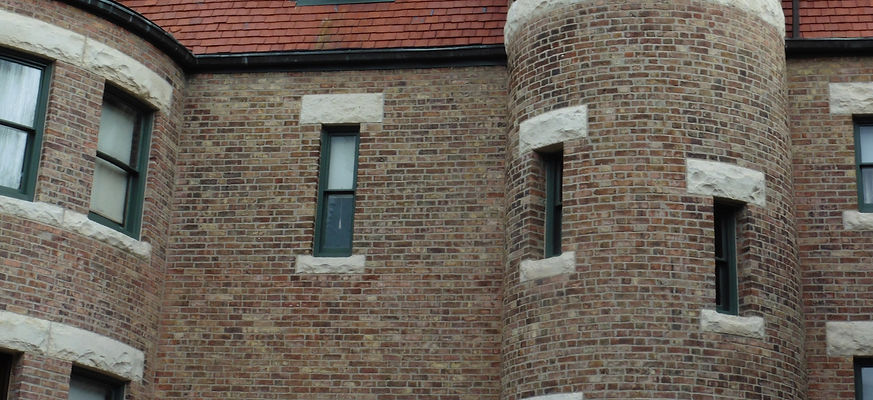
Glessner House
Chicago, IL
_JPG.jpg)
Overview
The Glessner House, originally a Prairie Avenue mansion and for a short time a printing research facility, is now a “house museum” and event venue. Both a Chicago and National Landmark, the 1887 structure, with its imposing, fortresslike exterior and elegant yet cozy interior, has always been ahead of its time. When the Glessners first lived there, for example, they turned gaslights on and off anywhere in the house by pressing a button on a central control panel.
Recently, the Glessner House has been switching over to geothermal heating and cooling. This is one of the most efficient ways to not only achieve indoor temperature control but also to regulate humidity. In Phase I, key components like pumps and fans were strategically tucked into closets and other areas not in public view. Activated in 2016, the system now delivers conditioned air to the parlor and other first floor rooms. Phase II, slated to start in 2021, will cover the rest of the museum, after Cook County and the Illinois State Historic Preservation Office give their stamp of approval to the plans.
Notable Nugget
In 1892 the Glessners replaced their gaslights with electric ones. However, because the Glessner family had no air conditioning, they spent each summer at their second home (The Rocks estate) in New Hampshire.
_JPG.jpg)
Green Upgrade Details
The geothermal installation was divided into two phases based on available funding. In Phase I (2015), two deep wells (boreholes) were drilled 500 feet down in the walled courtyard just south of the building’s parlor. Nested, concentric tubing was used in Phase I because it was considered better suited to the transfer of heat back and forth from the earth in a small space like the Glessner courtyard. Phase II (2021) consisted of drilling four more 500-foot wells. This time conventional tubing was used after the design team determined that both types of tubes were compatible and that all six wells could fit into the courtyard. Heat is carried by fluid-filled lines running between the wells and indoor heat pumps, and through holes in the house’s foundation.
Temperature/humidity dataloggers have been installed to measure the success of the geothermal system. So far the data indicates that first floor temperatures are more moderate than they were pre-geothermal. The results compiled after Phase II should give a more complete picture of how effective the new system is.
To further save energy, the museum’s many windows have recently been coated with ultraviolet-blocking film. Not only does this dual-purpose film cut down on heat coming in from outside in the summer, but it also protects textiles, furniture, and other museum treasures from harmful UV rays.
Major Players
-
Architectural Consulting Engineers (ACE)
-
Great Lakes Geothermal
-
Advanced Geothermal Plumbing & Heating




